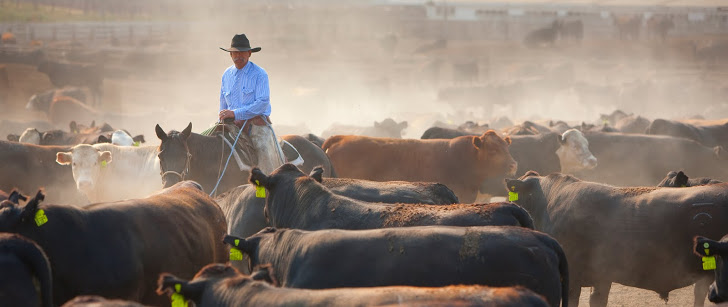By Jim Whitt
When I hired on as a pen rider at Wheatheart Feeders in 1972 there were roughly 20 cowboys and 60 company horses. The longest tenured hands got the pick of the best horses leaving the newest cowboys — forgive the pun — saddled with the worst.
Wheatheart had a good-looking buckskin that had a reputation for bucking. Since the seasoned cowboys preferred function over form the buckskin ended up being ridden by one of the newer hands who were more enamored with the horse’s color and conformation.
The buckskin ended up as a mount for a new hand the cowboy boss nicknamed Rooster. Rooster had everyone’s attention in the horse corral the morning he saddled the buckskin for the first time. He cinched him up tight and never even had a chance to put his foot in the stirrup before the buckskin broke in two.*
No horse at the National Finals would have out-bucked the rider-less buckskin that morning. He pitched so high and hard the stirrups slapped together above the saddle at the peak of his jump. Then it was rinse and repeat. I watched thanking God I hadn’t picked that horse.
After an award winning performance the buckskin finally bucked to a standstill and stood heaving while 20 pairs of eyes shifted from the horse to Rooster. Rooster calmly walked over to the buckskin, peeled off the saddle and bridle and turned him loose.
I had my own problems with a big, stout-built gray named Clyde. Clyde could really cow* but he had a couple of bad habits — he’d either try to unload me first thing in the morning or maim me by ramming my leg into a gate or fence post.
Rooster, Clyde and the buckskin have provided me with graphic leadership lessons I’ve shared over the years. If you hold a leadership position of any kind you share the responsibility for developing and maintaining the company’s culture. The culture defines what behavior is expected and what behavior will not be tolerated.
Behavior rewarded is behavior repeated. Rooster rewarded the buckskin’s bucking when he unsaddled him. Since the buckskin was bucked out Rooster probably could have loped him off into the sunrise without so much as a crow hop. And Rooster would have won the admiration of every cowboy in the corral. But the buckskin got his bluff in and Rooster folded.
There are people in every organization who get their bluff in by bucking in some form or fashion. If you tolerate their behavior they will define your culture. You’ll soon have a whole herd of buckers.
At the highly successful company Zappos, 50% of an employee’s performance review is based on whether or not they are living the Zappos culture and inspiring it in others. Zappos CEO Tony Hsieh says even if someone is a “superstar” they’ll fire them if they don’t fit their culture. In other words, he doesn’t care how good they look or how good they can cow — if they don’t ride for the brand they’re gone. Watch what Mr. Hsieh has to say about this is in this short video.
I can’t tell you the number of times I’ve seen human incarnations of the buckskin and Clyde who should be fired in organizations but who instead have free reign. They get their bluff in by bucking and because they either look good or can cow they are tolerated. In every case, they undermine the culture. I once had a client with an employee who everyone in senior management agreed was a “Clyde.” I asked why they didn’t fire him. They tolerated him because they thought he was really good at his job. Tolerating behavior is the same as rewarding behavior and behavior rewarded is behavior repeated. They tolerated their Clyde until he was eventually rewarded with the CEO’s job.
After riding Clyde for a couple of anxiety-filled weeks I didn’t care how good he could cow. I couldn’t focus on my work because I kept wondering when he was going to blow up and cripple me. I decided to let Clyde go and be somebody else’s problem. He just didn’t fit my culture.
If you have any people in your outfit that remind you of the buckskin or Clyde I recommend you follow my example. They will always be a problem. Let them go and be a problem for somebody else.
* “Broke in two” is a term to describe when a horse starts bucking. “Cow” is term used to describe a cow horse. A horse that is really good at cutting or sorting cattle can really cow.


